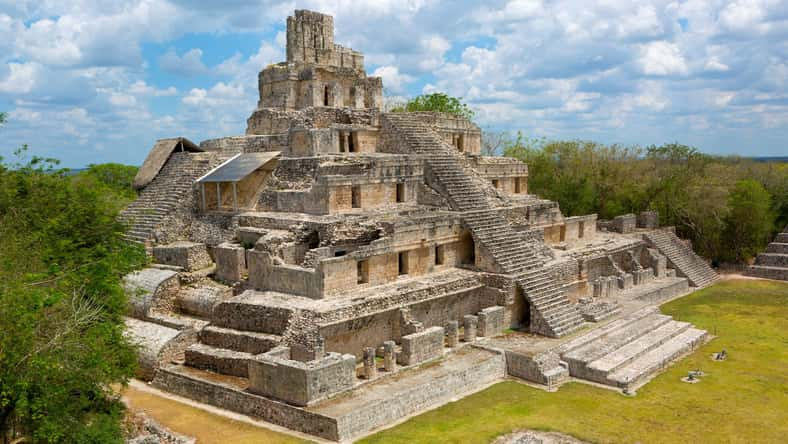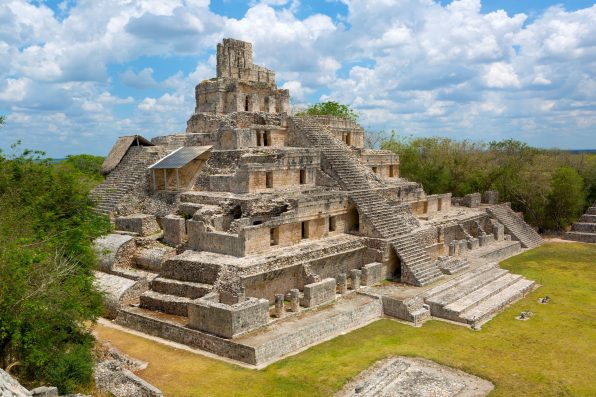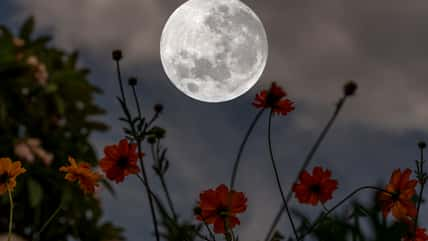While Excavating A Maya Ball Court In Mexico, Archaeologists Discovered A Mysterious Structure With Painted Walls From The Early Classic Period

During excavations of a Maya ball court in Campeche, Mexico, archaeologists unearthed a structure with painted walls.
The ball court was a space for a ritual ball game that the Maya and other Mesoamerican peoples played.
According to the National Institute of Anthropology and History in Mexico, the structure possibly dates back to the Early Classic period, which spanned from A.D. 200 to 600. It is covered with a layer of painted stucco.
“The inevitable impression is that the Mayan culture of this region that we have just explored was noticeably less elaborate than in the Petén, to the south, and the regions of the Chenes and Chactún, to the north and east,” Ivan Šprajc, the director of the excavation and an archaeologist at the Institute of Anthropological and Spatial Studies in Slovenia, said.
Apparently, the structure was important since ball courts were usually found only at major Maya sites that served as political centers.
Ball courts symbolized the wealth and power of a city. They had more of a ceremonial purpose rather than for sports.
The ancient site may have seen its highest occupation around A.D. 600 to 1000, during the Late Classic and Terminal periods, due to migrations and population growth. It offers new insight into what life was like in the region prior to the Spanish conquest.
Previously, archaeologists had used lidar to explore a vast portion of the Maya Lowlands in the Mexican state of Campeche.
This technique involves shooting millions of laser pulses from an aircraft to the ground below. The researchers could then map the topography of the landscape.

Barna Tanko – stock.adobe.com – illustrative purposes only
“We have found several ancient Maya settlements, with remains of residential buildings and temple pyramids,” Šprajc said.
In 2023, Šprajc and his team discovered a lost Maya city named Ocomtún. It had several large pyramids from A.D. 200 to 900, the Maya Classic period. In addition, they encountered another site with a plaza, a rectangular water reservoir, and a 52-foot-tall pyramid.
There were offerings that had been left on top of the pyramid, such as ceramic vessels, a spear point, and a ceramic animal leg that may have been of an armadillo.
The offerings were placed on top of the pyramid somewhere between 1250 and 1524 during the Late Postclassic period, which was the last centuries before the arrival of Spanish conquerors.
By the Late Postclassic period, the central Maya Lowlands were suffering through political turmoil. Still, some people remained in the area even after the crisis of overpopulation, long-lasting droughts, soil depletion, and warfare that occurred in the 9th and 10th centuries.
“The offering indicates that even after most of the Classic period Maya settlements had been abandoned, small and impoverished human groups were still rambling around, putting offerings on or near the buildings of their forebears,” Šprajc said.
Sign up for Chip Chick’s newsletter and get stories like this delivered to your inbox.
More About:News





